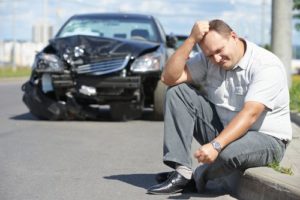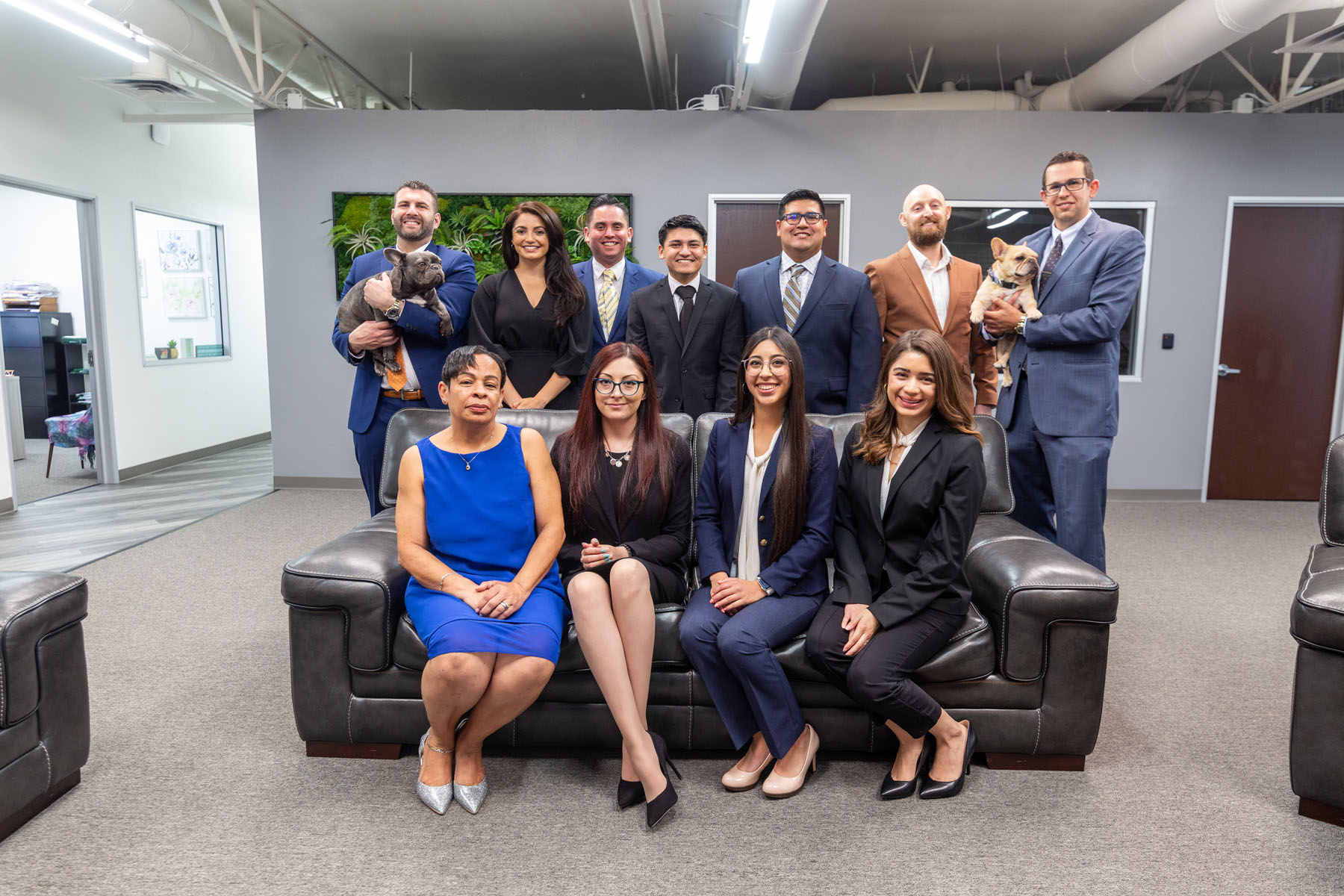
A growing number of people who live in cities have come to rely on Uber drivers instead of taxis when they need a ride. Most of them never stop to think about what they should do if they are in an accident with Uber. For passengers, the rides are often short, preventing them from taking the normal safety precautions of buckling up. For the driver, the risk of being in an accident depends on how much time you spend on the road. Whether you are an Uber driver or a passenger, you should know how Uber works and what steps to take if an accident occurs.
There are other share ride companies that operate in similar ways including Lyft and Curb. Uber is the most popular by-far to the degree that more people know the Uber name than the term “share ride.”
What is an Uber?

Some people consider an Uber to be like a taxi service but there are several important differences between the two. Uber is a “ride-hailing” service and drivers cannot pick up passengers that flag them down. Instead, potential passengers use their Smartphones and a location-based app to arrange for a driver to pick them up.
Uber offers different level of services for individuals, groups, and black car service in some cities. Some of the biggest reasons that people prefer ride share services over traditional taxi services are that they usually have a shorter wait time for the ride to arrive and it costs a lot less.
Uber drivers use their personal vehicles to provide rides and they do not require a commercial driver’s license. Drivers can choose their own hours and make a decent income without a major upfront investment. Although the vehicle requirements vary from city to city, most require cars to be no more than ten years old and they cannot have any major damage. Uber inspects each vehicle before approving them to transport passengers.
One of the most confusing issues that will affect both the driver and an injured passenger in an accident with Uber is that of car insurance. The vehicle is a personal vehicle part of the time and a work vehicle when the driver is available to pick up passengers. When the car is not on the app, the driver’s personal car insurance is their only coverage. Once the driver is on the app and available to pick up passengers, Uber offers supplemental liability in addition to the driver’s personal auto coverage. Once the driver has picked up a passenger and is transporting them, Uber provides liability coverage for up to $1 million.
Insurance Coverage: Not a Black and White Issue

Uber considers its drivers as “independent contractors.” They aren’t the company’s employees, but third-party service providers who work under the Uber name. Uber uses this classification to avoid liability when drivers have accidents.
As a driver, it is important for you to understand the terms of your personal auto insurance and the liability coverage offered by Uber. You don’t want to find out after an accident with Uber that neither of the insurance companies wants to pay.
A growing number of insurance companies offer personal auto insurance to cover Uber drivers during all stages of their rides and during their personal use. If you fail to realize there are gaps in your coverage, it could lead to problems for you or an injured passenger.
Many companies do not cover any type of “commercial driving” at all. A driver may mistakenly think his personal auto coverage will protect him in an accident when driving for Uber may actually invalidate his personal auto insurance policy. You need to take a proactive approach to understanding your coverage and its limits.
When You Are the Passenger
Since you were a passenger when the accident occurred, the driver’s personal insurance probably won’t cover your injuries. This is true even if your driver was at fault, was intoxicated, or driving recklessly. Although the liability coverage offered by Uber is there to cover injured passengers, it isn’t unusual for the insurance company or Uber to resist paying the claim.
If you are the passenger in an accident with Uber, get medical treatment for your injuries. This serves two purposes. For one, the medical provider can determine the extent of injuries early on so that you get the timely treatment you need. Also, this will provide a documented record of your injuries after the accident in case you have to file a personal injury claim.
Once you get the medical care you need, contact an experienced personal injury attorney to evaluate your case. You need to know your options in case Uber and the driver’s insurance company both deny your claim.
Uber’s practice of treating drivers as third-party service providers can make it very difficult to get compensation. Unless the driver has taken out personal insurance that covers the gaps, determining who is liable can result in a legal struggle. A personal injury lawyer knows your rights and how to get the money you need to pay your medical bills.
When You are the Driver

Driving for Uber is an appealing way for a lot of people to make good money in their spare time. Some of the requirements vary by city but drivers must be 21 years of age and have three years of driving experience. Most require newer vehicles that aren’t rebuilt or damaged. The company also requires potential drivers to pass a background check and a criminal check.
As mentioned above, drivers sometimes fail to realize that there are times when neither their personal insurance nor that offered by Uber will cover their damages. Sometimes drivers don’t realize they must pay the $1000 deductible out-of-pocket even if the Uber insurance pays.
Never make any assumptions or any promises to other drivers or your passengers if you have an accident with Uber. Basically, you will need to take the same steps that you would when driving your personal vehicle for your own purposes.
- Call 911. You need to get an accident report, even if the damage seems minor. You, your passengers, or the other driver may require medical care. The first step is always to get medical help for everyone who needs it. Never try to minimize your injuries or those of anyone else involved in the accident.
- Take Photos. Make a visual record of damage to your car, the other driver, and any conditions that might have contributed to the accident. Look for skid marks, or a lack of them if the other driver should have stopped. Look to see if there are any empty alcohol containers in the other driver’s vehicle.
- Get the Other Driver’s Information. This includes their license plate number, contact information, and their insurance company.
- Don’t Take the Blame. People often make the mistake of taking the blame after an accident as a way to console other drivers or passengers. Think about what you say and how it will sound if it gets repeated in a courtroom.
- Look for Witnesses. Ubers are used in cities where there is always a lot of traffic around. Find out who saw what happened and get their contact information as well.
- Take Notes. Use your phone to take notes on anything that may be of value later on. Every Uber driver has a smartphone. Use yours to gather all the information available.
- Contact Uber. You should keep their hotline number on your phone just in case you need to contact them right away. If the hotline doesn’t work, send them an email. Even if you were not in online mode at the time of the accident, the company will probably de-activate you as a driver. It depends on whether you were online at the time and the extent of damage to your vehicle whether you will be allowed to drive. You will have to wait until your car is repaired and/or inspected again or until the investigation is completed and you are cleared.
- Call Your Insurance Company. Right after the accident is not the time to clarify the murky line between who pays when. Your personal insurance might not cover the accident but you need to report it just in case it does. One reason that the issue of which insurance company to call is so complex is that most insurance companies don’t want to pay if you have coverage with another company.
- Tell the Truth about Being Online. One thing we all know about technology these days is that you can track everything online. If you have an accident while you are offline, tell the truth. Otherwise, you are guilty of fraud.
- Contact a Personal Injury Attorney. Insurance companies are notorious for tactics that keep them from paying out claims. It is never a good idea to deal directly with the insurance company adjuster. They often make low offers to settle cases or they challenge your injuries. An experienced personal injury attorney knows how insurance companies work. They will negotiate on your behalf for compensation that is fair and that you deserve.
The Issue of Fault
Uber insurance should pay if you were online at the time of the accident regardless of whether you or another driver is at fault. That doesn’t mean that they will try to put the blame on you and claim that you are an independent contractor. Determining who is at fault in an accident with Uber is important under any circumstances. If you are at fault and you are not covered for the full amount of damages, you could be sued.
Everything that you do from the time of the accident will go towards proving or disproving your fault. Whether you are the driver, a passenger, or a pedestrian, it is in the insurance company’s best interest to put as much of the blame as possible on you. They will use anything that you say, do, or fail to do as evidence against you.
California is a comparative fault state, meaning that a portion of the fault for an accident can be shared by more than one person. For example, if you are speeding when another vehicle strikes you, the court might determine that you are 25% at fault while the other driver who struck you after running a red light is determined to be 75% at fault. That means that you can only collect 75% of the total amount of damages you incurred.
Uber passengers can also absorb some degree of fault. Although passengers in taxis are exempt from wearing a seatbelt, share ride passengers are not. The company encourages drivers to maintain a seatbelt policy but enforcing this policy is left up to the individual driver. If you failed to wear your seatbelt and are injured in an accident, the driver may claim that he/she asked you to wear your seatbelt and you did not. The driver’s attorney might argue that your injuries wouldn’t have been as severe if you were buckled in.
The Role of the Personal Injury Attorney in an Accident with Uber

Many accidents are less “clear cut” than the people involved initially believe. The efforts of the insurance and rideshare companies not to pay make it even more challenging to prove a personal injury case. It is necessary to assign fault before you can collect compensation from the at-fault party.
An experienced personal injury attorney not only knows what to expect from the insurance companies but also the types of evidence you need to win your case. He will collect all of the essential documents like the accident report, your medical records, and witness testimony.
During the initial consultation, the attorney will explain your rights and your options. He will provide guidance to help you decide the best approach to your case. He will negotiate with the insurance company adjuster to make sure that you don’t settle for their first offer and get less money than you need to cover your losses.
The impact of an accident can last for months, years, or even for a lifetime. It can have a direct impact on every aspect of your life, including your ability to earn an income.
Injuries from an auto accident can be confusing any time. When you have an accident with Uber, reaching an agreeable resolution is often more difficult. If you are an Uber driver who had an accident, contact a personal injury attorney to learn more about your liability and that of your insurance companies.
If you had an accident with an Uber contact us to schedule a consultation. We can help you get the best possible settlement for your injuries.



